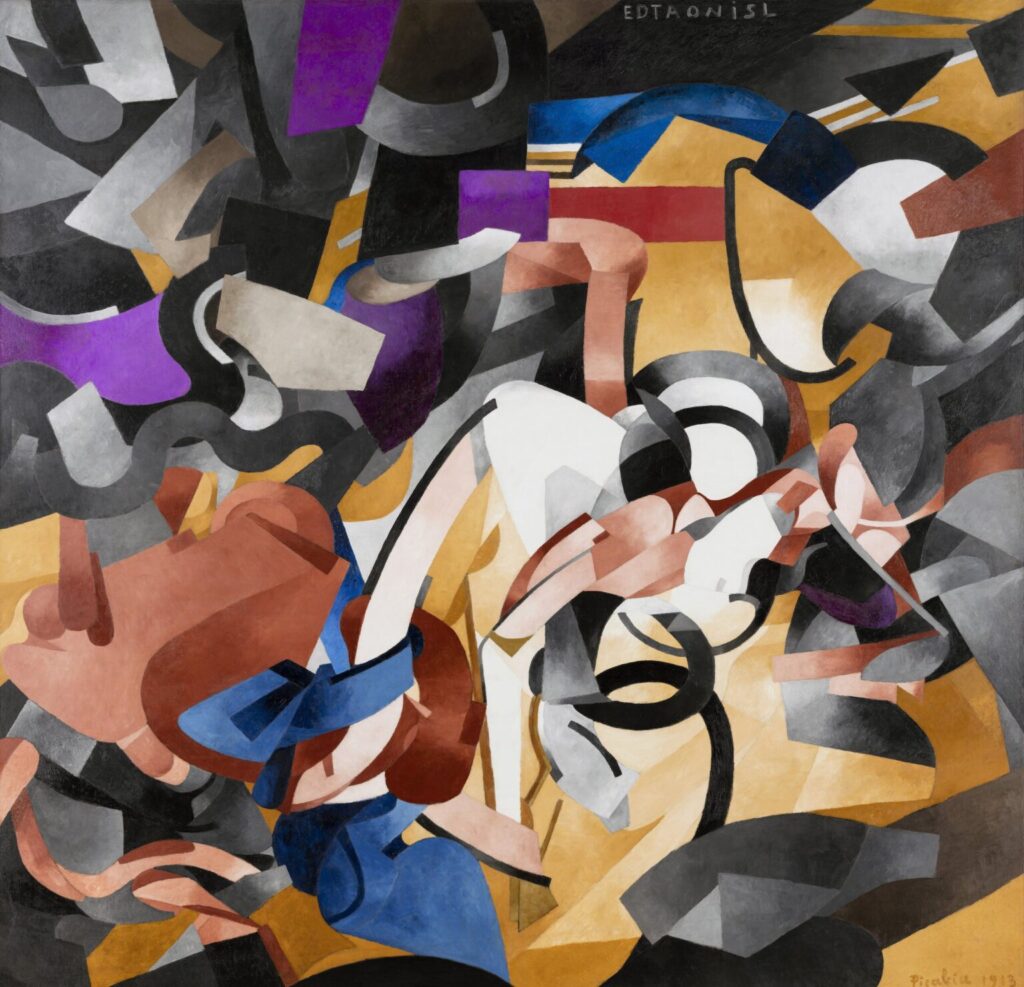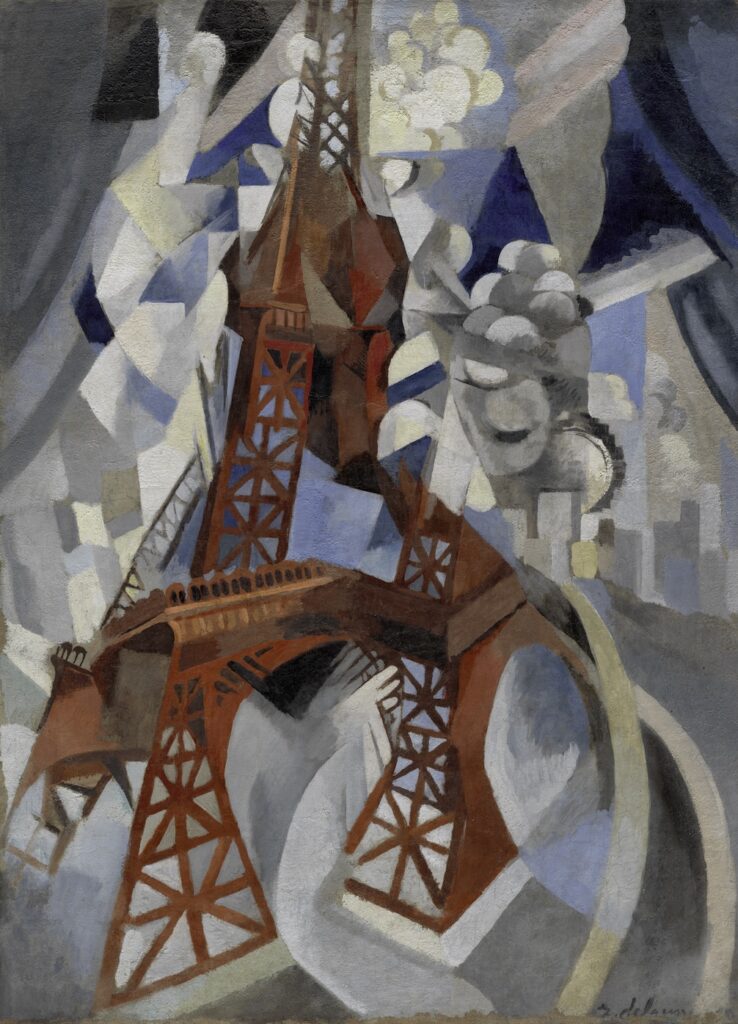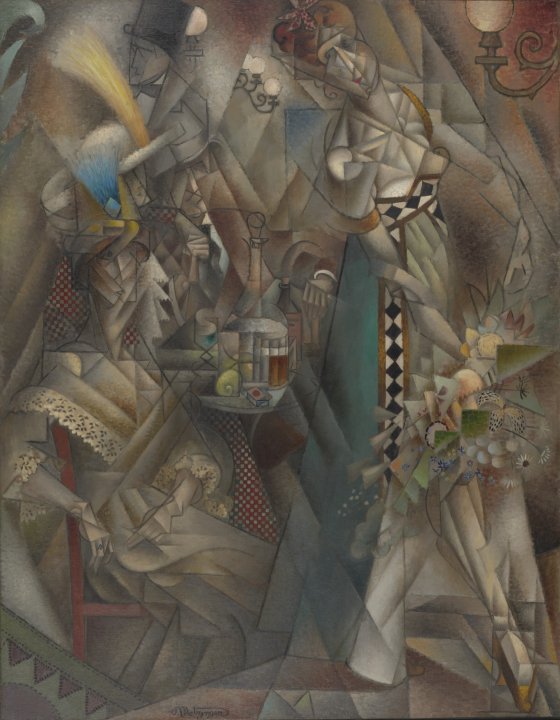‘Orphism in Paris,’ Now at the Guggenheim, Reflects the Energy and Optimism of the ‘Movement Between Movements’
Guillaume Apollinaire named the body of work devoted to delicate innovations in abstracted form, and especially color, after the legendary figure of Greek mythology, Orpheus.

‘Orphism in Paris 1910-1930’
Guggenheim Museum, 1071 Fifth Avenue, New York, NY
Through March 9, 2025
Orphism, the lesser-known “movement between movements” between Cubism and Surrealism, takes center stage in a handsome show at the Guggenheim featuring 26 artists and 86 works spread out along the museum’s rotunda, offering a window into a brief but fascinating time.
Guillaume Apollinaire, the poet and art critic at the center of Modernism’s birth, had a talent for naming art movements. He dubbed the geometric, semi abstracted paintings by his friends Picasso and Braque Cubism. Later, he would dub Magritte’s floating bowler hats and Dali’s soft watches Surrealism. He named the less famous, but equally important art movement devoted to delicate innovations in abstracted form, and especially color, Orphism.
With its reliance on multi perspectival, multi-hued and rhythmic intensity, much of it inspired by Paris’ burgeoning jazz scene — Josephine Baker was all the rage — Apollinaire named it after Orpheus, the legendary musician of Greek mythology.
Orphism was most linked in Apollinaire’s mind to Robert Delaunay and Sonia Delaunay, the French power couple of turn-of-the-last century painting, but the show also features early devotées of the school that one might associate with other schools: Marcel Duchamp, Francis Picabia, Mainie Jellett, František Kupka, and Amadeo de Souza-Cardoso, as well as the Synchronists Stanton Macdonald-Wright and Morgan Russell.

As we learn in the show, Robert Delaunay — arguably the father of Orphism — was a close friend of the painter, critic and theorist Jean Metzinger who lent intellectual heft to Orphism’s genesis (he had similarly lent his acumen to Cubism in a signature essay). Metzinger would also paint the first cubist portrait of Apollinaire, sadly not included in this collection.
Metzinger’s “Dancer in a Café,” however, is. It’s a heady mix of nearly every idea alive at that moment. Its dancer and spectators are refracted into ghost traces of movement portrayed as cubes, squares and rhombuses; the air itself is folded into geometric planes. It is alive with heady ideas, deconstructing human perception into its overlapping components. The Impressionists had already reinvented vision as the atomization of light or color — now space and time were being considered.
Metzinger’s ideas strongly inflected Robert Delaunay’s own, the show informs us, prompting him to invent the term “simultaneism,” as in painting that portrays the overlapping of moments and colors on a single. The works by Delaunay and his wife Sonia, however, are more muted in their exploration ideas, with a strong and sumptuous emphasis on color. It seems as if chromatic range had never been so richly investigated as its own proper subject before this moment.

Delaunay’s largely abstract explorations of color with their signature circles or pools of radiating hues then give way to his Eiffel tower series. Along with Duchamp’s more muted and monochromatic investigations into the human body as mechanical form, the Eiffel tower seems an appropriate icon for Delaunay to fix on.
The tower, then novel, was an emblem and marvel of the dawning of the machine age, and Delaunay makes it fairly dance in his several treatments of it, breaking it into planes that intersect the cloudy Parisian sky. Although modernism is now nearly two hundred years old, the excitement is palpable.
Another unexpected stand out in this show is Francis Picabia, who is generally known for his work as a magazine publisher, writer, poet central to the Dadaist movement. He turns out to have been a tremendously accomplished painter as well. Several massive canvases are featured here, establishing him as a major painter from this period.

His work interweaves elements with an incredible inventiveness, phenomenal color sense, and unmistakable polish. Distinctive in Picabia’s style is his knack for combining abstract shapes with subtle chromatic gradations that lend a three-dimensional quality to his work unseen in his contemporaries.
It becomes obvious through the show’s timeline that the ephemeral energy of the Orphist movement had largely petered out by 1920. Delaunay would return to figuration, Duchamp and Picabia would become avatars of Dada and Surrealism, and the other luminaries of this show would branch out into other movements.
The new American wing of the Orphist movement, the self-named synchronists Stanton Macdonald-Wright and Morgan Russell, make a strong addition to the show, but appear mostly as historical footnotes. They deserve a second show of their own.
Nonetheless, the show, co-curated by Vivien Greene and Tracey Bashkoff, reflects the energy and optimism that were the mainstays of Orphism. Einstein had just published his theory of relativity in 1905, and James Joyce was sketching the first outlines of “Ulysses.” Gertrude Stein had established herself as the de facto den mother of both literary and artistic innovation. There was a fervor for experimentation that, sadly, would only be blunted by the eruption of World War.
It’s also hard to think of a more suitable or iconic building to house such a group of paintings, given that the woman who commissioned it, Peggy Guggenheim, was their leading friend, patroness and collector. In a very real sense, the rotunda itself is a direct offshoot of the avant-garde ideas expressed by the artists here. It’s good to be reminded just how exceptional the birth of the modern truly was.

